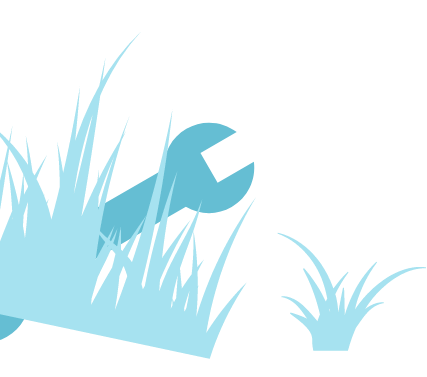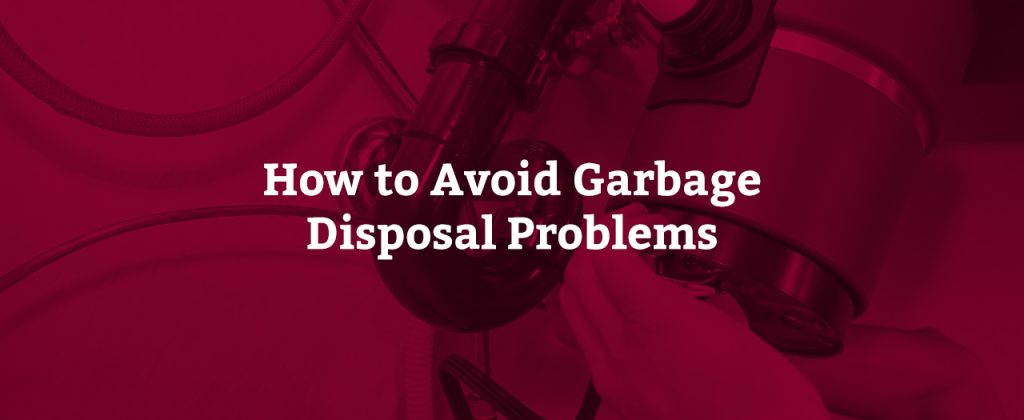Welcome to Ready & Able, formerly known as David LeRoy Plumbing! Although our name and brand have changed, we are still here to serve you and all of your plumbing, heating, cooling, and air quality needs!



Like any other household appliance, garbage disposals occasionally experience problems that require fixing. Depending on the issue, some troubleshooting and a little patience might be all that is needed to get the unit working again.
When your food waste disposal unit stops running, the problem is usually related to a foreign object or food materials stuck inside. Jammed blades cause water to back up in your sink, leading to a mess that can be frustrating to resolve. Review this guide to learn about preventive measures you can take and how to troubleshoot your disposal problems when they do occur.
It’s best to know ways to avoid garbage disposal problems in the first place. Keeping your garbage disposal unit in good operating condition can certainly help make your life easier. However, the more you use time-savers instead of conducting routine maintenance, the more problems you may incur.
To keep your disposal in shape, use the unit regularly even if you prefer other waste discarding methods. For in-depth advice, consult a plumber on how to keep your drains clean and your blades turning. Here are some tips for maintaining your unit.
To keep the disposal functioning efficiently, you can clean the blades using the following easy methods. Always use caution when you’re cleaning your garbage disposal.
The easiest way to prevent clogs is to be mindful of what you dispose of. A garbage disposal helps you clean the dishes while keeping the sink clear of food particles, but it should not be used as a replacement for trash removal. Scraping the dishes off before washing them is a practical way to ensure the garbage disposal keeps running smoothly. These are some items you should avoid grinding.
Be careful with how many vegetable peels you put into the drain. It’s often better to recycle these food leftovers in a compost pile or dispose of them in the trash. If you do use the garbage disposal, keep vegetable cuttings contained and feed them slowly inside the unit while running cold water into the sink.
Using hot water during grinding may convert fats into a liquid form and cause a stoppage in the drain line. Turn on the cold water before you start grinding any refuse and run the water for approximately 15 seconds after you have finished. Cold water will flush food particles down the drain line while keeping fat drippings in a solid form.
Sometimes, a garbage disposal just needs a quick fix to start working again. You can try resolving the problem on your own, but if the disposal continues to have issues, it’s best to get a professional to examine your unit. Keep reading to learn about common problems you might have with your garbage disposal unit and how to troubleshoot for solutions.
For dispelling pungent odors, avoid using harsh chemicals or heavy-duty cleaning supplies. They aren’t needed and rarely work. If the smell persists, or if a clog forms, food might be lodged deep within the drainpipe and will need to be removed by taking apart the pipe system. Here are some quick fixes you can try.
A few underlying causes can cause a garbage disposal not to run. If you don’t hear the motor humming, follow this process to reset your unit.
If pressing the reset button proves ineffective, a wiring problem could be the culprit. If you feel comfortable with basic wiring repairs, you could try following this process for replacing the switch.
If the disposal’s blades won’t grind but you can hear the machine humming, the problem might be a jammed flywheel. Avoid running a disposal unit in this locked condition. Follow this process to unjam it.
Trapped water is a sign of a clog. As the clog worsens from additional food waste, less water can escape down into the drainpipe, resulting in a full sink with a slowly leaking drain and nowhere for solid refuse to travel. Follow these steps to unclog the disposal.
If this process fails, the clog may be deeper in the pipes. You will need to get a plumber to remove your drainpipe and clear out any impacted waste.
Areas where leaks commonly occur include the sink flange, the drain hose and the hose running from the disposal to the dishwasher. To fix a leak, try the following steps.
The mounting apparatus that secures the disposal to the drain can sometimes become loose. For a leaky sink flange, follow these steps.
A leak at the dishwasher connection could also happen, especially as your unit ages. For a leaky dishwasher connection, try these steps instead.
A leak at the discharge drainpipe will result in water dripping below the sink. The discharge drainpipe carries wastes into the drain trap below the disposal unit. For a leaky discharge drainpipe, try the following steps.
Clogs are one of the most common garbage disposal problems, especially during the holidays. During large gatherings, it’s important to avoid overusing your garbage disposal as you do the dishes. Here’s how to fix a garbage disposal jam.
Avoid filling your sink up with food waste. Instead, slowly feed your garbage disposal as you do the dishes. Your unit can become overwhelmed, and heavy usage will dull the blades faster.
Run cold water while the disposal is in use to wash food wastes down into the drain chamber. To clean 1 pound or more of food waste, plug the drain before running the water. Fill the sink at least one-quarter full with cold water. When it’s time to clear out the waste, pull the drain plug out and turn the disposal on. This process will thoroughly rinse the drain line as garbage is disposed of.
Only grind disposal-friendly foods, and pour as few scraps as possible down the drain. It may seem like the disposal can handle every food you want to get rid of, but some wastes tend to inhibit the grinding motion of the blades. Foods that cause drain clogs might be soft and seem safe to dispose of.
Our plumbers often find foreign objects lodged in the disposal during a call. The garbage disposal unit is designed for food waste only, so throw wrappers, bottle caps, paper or other non-food items into the trash. Even smaller, softer items can cause clogs.
One method to try for minor clogs is pouring a mixture of baking soda and white vinegar down the drain. You can also place several heaping spoonfuls of baking soda down the disposal drain. If you have a second drain in the adjacent sink, also pour some baking soda into it. Then pour the white vinegar generously down both sides of the drain. Let the mixture bubble for about 30 minutes. Then boil some water and pour it down both sides of the sink.
Even with proper care and maintenance, a DIY solution might not be enough to keep your garbage disposal from requiring professional intervention. So when all else fails, request repair services with a professional plumber.
Keep in mind that the longest you should use your garbage disposal unit is typically seven years. If your garbage disposal is older than this, consider replacing it rather than repairing. Contact Ready & Able at 717-963-2034 to discuss your options.
Sources:
Welcome to Ready & Able, formerly known as David LeRoy Plumbing! Although our name and brand have changed, we are still here to serve you and all of your plumbing, heating, cooling, and air quality needs!